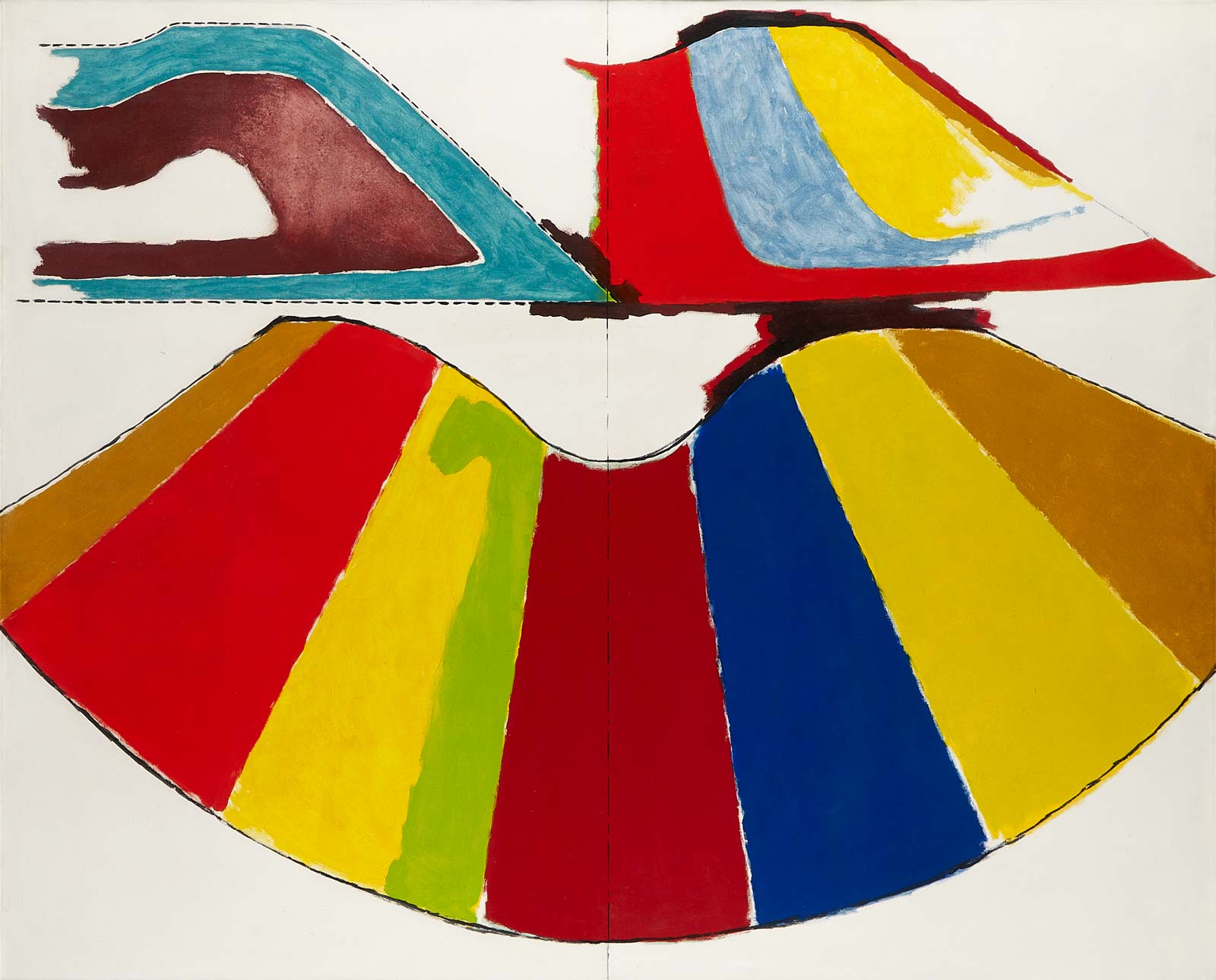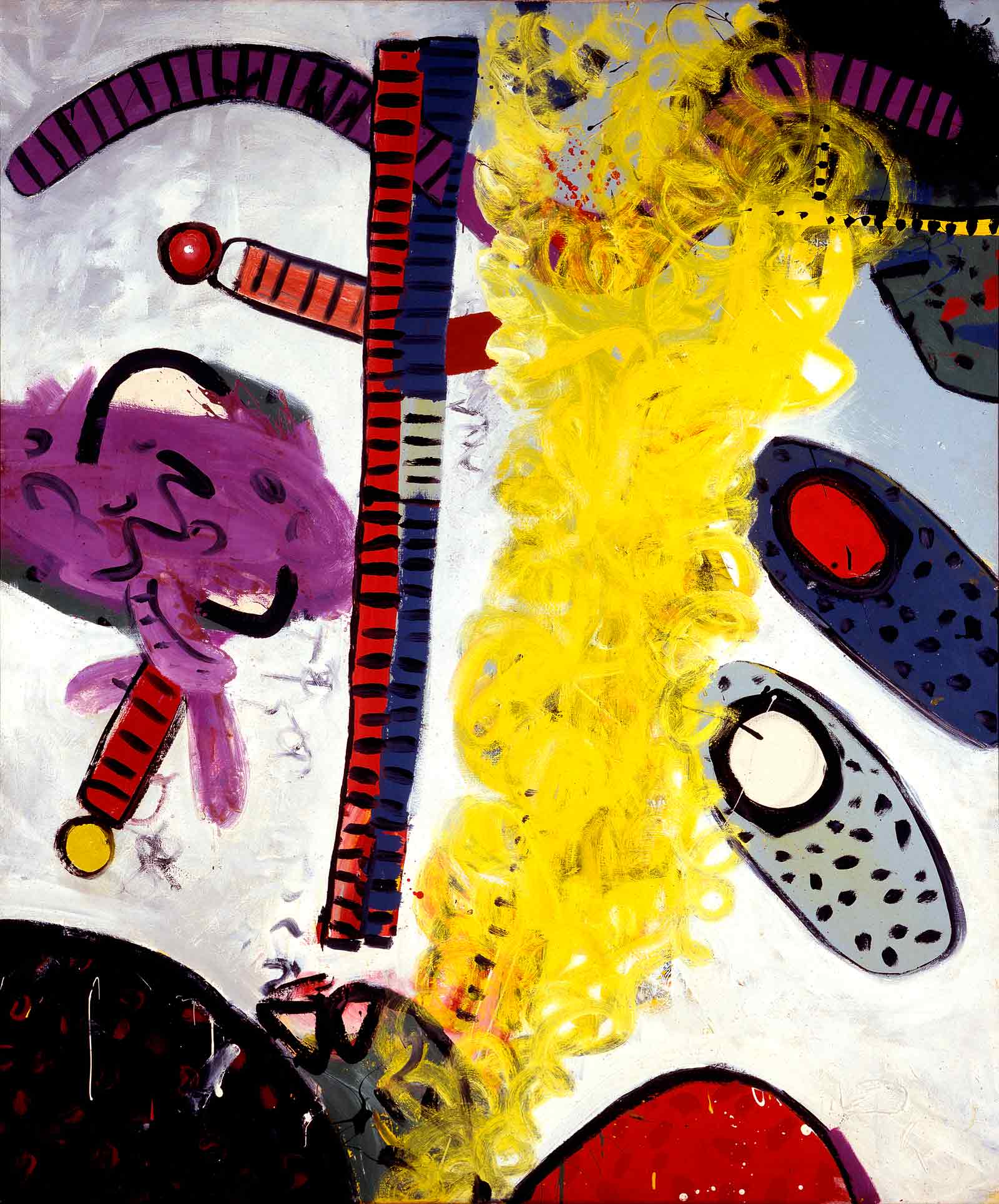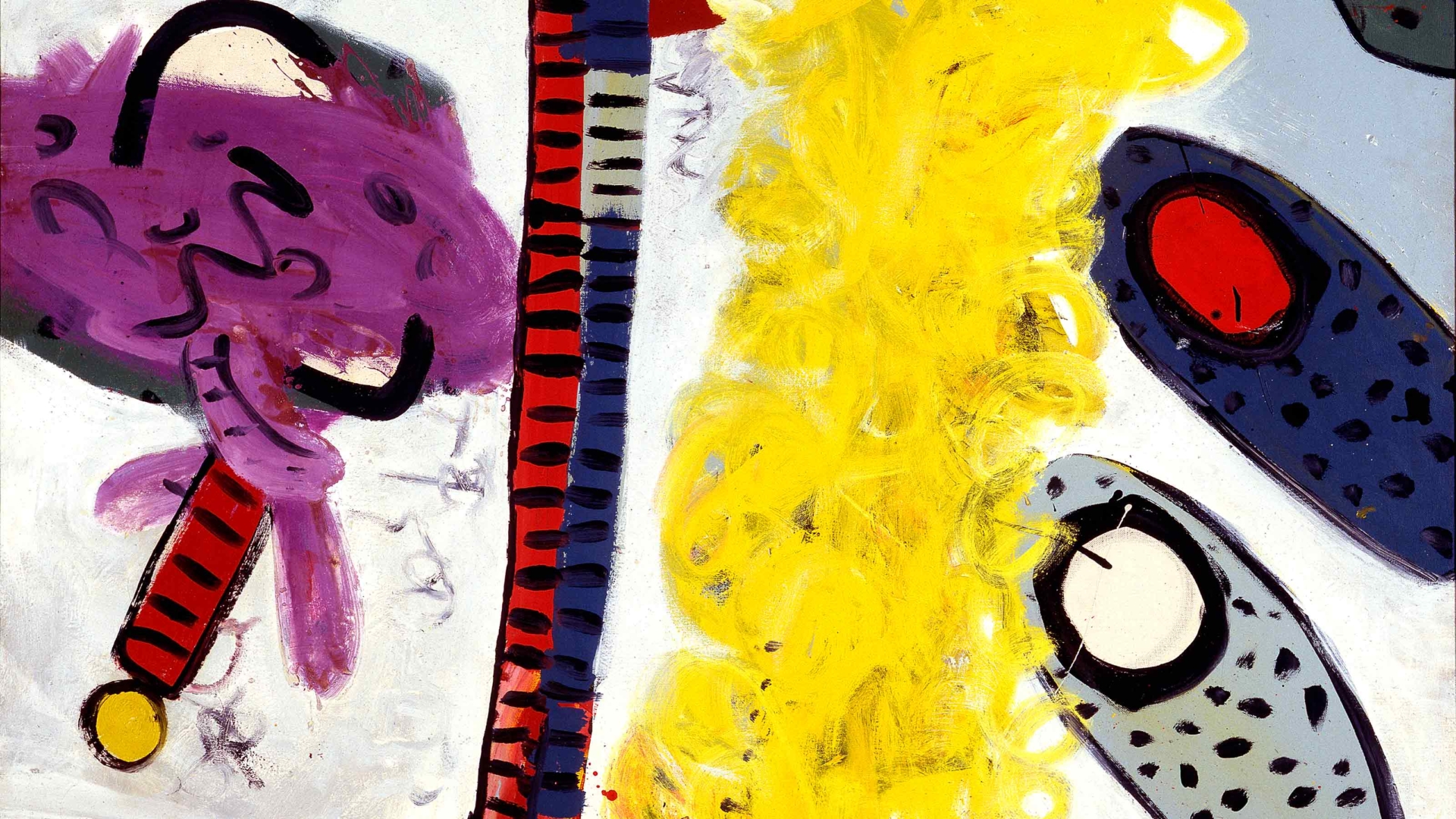The explosion of colour
Constant, from 1962, by Harold Cohen and Smoke Signals no 1, from 1960, by Alan Davie formed part of the group of paintings by British artists that travelled directly from London to Baghdad to be displayed at the Gulbenkian Cultural Week, in November 1966, at the Modern Art Centre in Baghdad.
During the 1960s, both artists explored the use of colour, either as an issue of representation (Harold Cohen) or with an interest in the subconscious, improvisation and music (Alan Davie). It is through abstraction, spatial organisation and chromatic explosion and by extending the importance of the edges of the canvas that these two works resort to experimentation of colour in painting.

The dynamism of the painting, the movement of shapes and the new conception of space with large-scale canvases are crucial points that link these artists and both works.
Harold Cohen, from the start of his career, was concerned with the expression and emotional potential of colour. In Constant, the irregularity of the shapes quickly draws the eye to focus on the contrast between primary colours and secondary colours. Other works from the same year explore this spatiality of effects created by diagonals, symmetries, asymmetries and a constant tension between repetition and variation.

In Alan Davie’s painting, there is a preoccupation with gesture, but also a shamanistic mood, “painting with an empty mind,” as he used to say, in a process of spontaneity, improvisation and rhythmic markings, such as in jazz. Davie played various instruments and, after World War II, he played the saxophone with a group of professional jazz musicians travelling Europe. The artist said: “There is a relationship between jazz and what I do with a paintbrush: improvisation and chance.”
His paintings are produced in a state somewhere between consciousness and semi-consciousness, approaching a primitive art: in their intuition, with spiritual intentions, and in the intensity of their dynamic quality. Smoke Signals no 1 captures ephemeral saffron yellow smoke: images of abstract forms of reality but suspended in an indeterminate space. Cigarettes, microbial forms flitting across the canvas, with the suggestion of a mouth and teeth at the lower left-hand corner of the painting.


